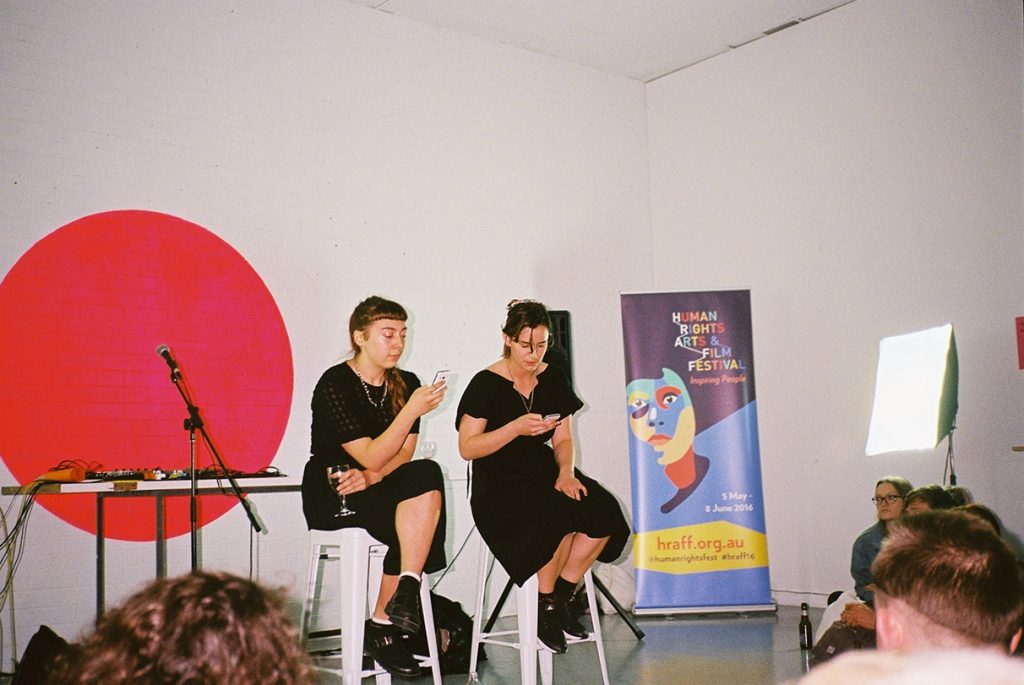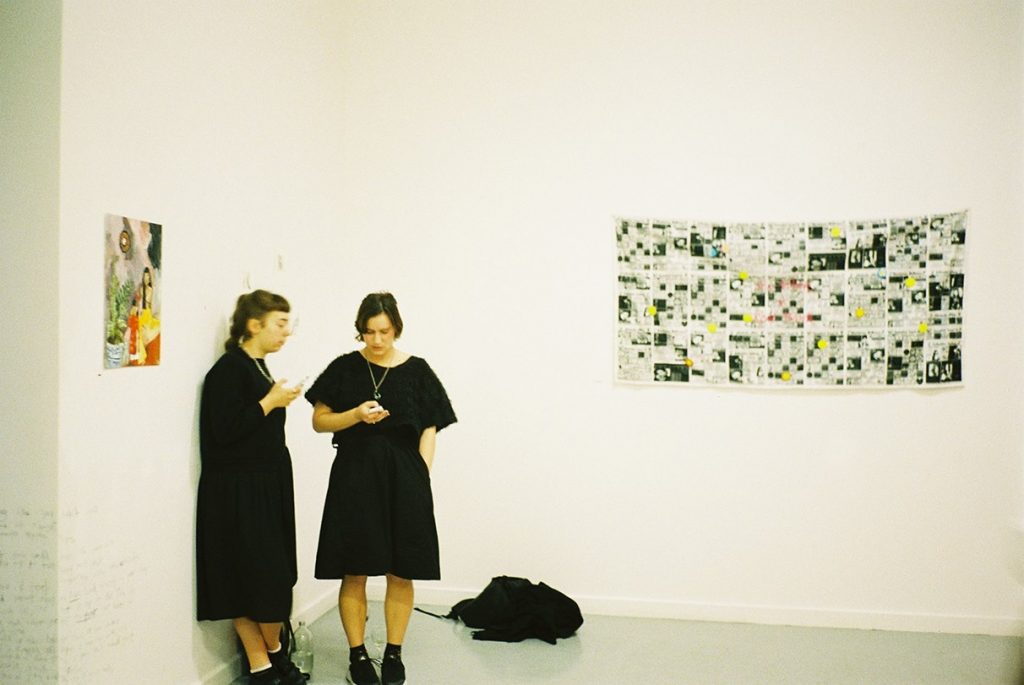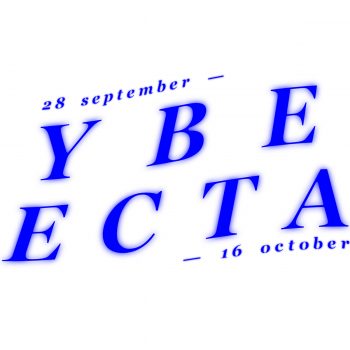This manifesto was written by Fresh and Fruity for Sleepover Club Edition ii.
________________
Fresh and Fruity is an all wahine collective based in Aotearoa consisting of Mya Middleton, Hana Aoake and Severine Costa. As well as facilitating the work of others, the collective upholds an artistic and writing practice, with which they seek to highlight the power dynamics within the art world, by illuminating the intersection of class, race and gender.
To coincide with Edition II, Fresh and Fruity present Fresh and Fruity manifesto volume iii: Creating accountable spaces (part i), an ongoing piece questioning the accountability of art institution in maintaining safe spaces. The manifesto highlights issues such as the way in which perpetrators are protected, the emotional labour of this work, support strategies and strategies for self care for both survivors and their supporters.
Fresh and Fruity manifesto volume iii: Creating accountable spaces (part i) was read for What Has Feminism Ever Done For Me? at Neon Parlour (6th – 19th May 2016)
Fresh & Fruity – Facebook, Instagram, Tumblr or Twitter.
Sleepover Club – Website, Facebook and Instagram.
Photograph by Sleepover Club of Fresh and Fruity reading for What Has Feminism Ever Done For Me? at Neon Parlour.
________________
DISCLAIMER: this text has been written under the guidance and consultation of trained counsellors and persons working within this field. Much of this text is based around our own experiences in running a ‘safe space’ and in organising huis on strategies to support survivors with Rape Crisis Dunedin and Help Auckland across Aotearoa. This may also be potentially triggering for a number of people, so please engage with this text with care and self awareness. Also note that this document is purely our product and is not affiliated with or endorsed by any rape or sexual abuse centre.
TRIGGER WARNING: the contents of this document may be triggering for survivors of sexual trauma
________________
We would firstly like to acknowledge the traditional owners of this land our ancestors and their whakapapa. We are standing on stolen land.
Ka īnoi tātou
E te atua
whakapainga tēnei nei
ka noho ana koe ki roto i ōku tinana katoa.
Whakapainga tenei kaupapa,
Haumi e hui e taieke e
Amen1
Although galleries are deemed as a ‘public space’, survivors of trauma sometimes find themselves in these spaces feeling unsafe. This can occur if a perpetrator is celebrated or even just tolerated in that space. Imagine the pain of being around a person who violated your trust in a space which is intended to be a safe place for the public.
The response of a community to rape, violence and/or sexual assault is often more traumatic or re-traumatising for the survivor than the event itself. People in safe spaces can allow survivors to feel believed and supported.
A safe space is somewhere where a survivor can feel safe to disclose and feel supported.
Staff and members of safe spaces need to take affirmative action and are active bystanders.
Galleries need to be held accountable as public institutions. Galleries who celebrate perpetrators are not safe spaces and need to be held to account.
As a gallery representative or owner, it is your responsibility to make the space safe for survivors. If somebody comes to you and asks for your help because a perpetrator is in the room, be aware that it took them a huge effort to do so.
DON’T IGNORE THEM, AND DON’T MAKE THEM DEAL WITH THEIR PERPETRATORS THEMSELVES.
A good way to take affirmative action for a gallery is by promoting a safe space policy, maybe in the form of a printed text. It should highlight roles and responsibilities of staff and managers and members of the space. It can be helpful to display this text visibly near the entrance.
Artists should feel safe in a gallery space too. Make sure the artists you are working with are given the opportunity to tell you when the presence of someone is making them feel unsafe or triggering them. Allow these conversations to feel easy. Do not make the artist feel as if they cannot empower themselves at their own show.
A simple way to remove a perpetrator from your space is to develop a simple, clear and direct script. Depending on the situation, it may sound something like, ‘Based on your previous behaviour, we think it is best you leave this space.’ Other ideas include, ‘we do not tolerate that behaviour in this space, please leave’. You can develop your own script based on the need.
For best results repeat this mantra, do not bother answering or responding to the perpetrators provocations or additional questions that may arise.
Have someone with you to make sure they understand.
If they don’t respect your request for them to leave, seek assistance from the police.
The most important thing you can do as a support person for either a perpetrator or a survivor is to…
ALWAYS LISTEN TO THE SURVIVOR.
ALWAYS BELIEVE THE SURVIVOR.
RECOGNISE THAT IT IS NOT YOUR STORY.
DO NOT MAKE IT ABOUT YOU even if you have had a similar experience.
Respect their wishes.
Their safety is the most important thing in any situation.
DO NOT SUGGEST ACTIONS THEY ARE NOT COMFORTABLE WITH.
Talk to a rape crisis service. Get advice on how to help them. This is especially important if you yourself are a survivor as these kinds of conversations can be triggering.
Talk to the survivor (with caution) about what they want. Do they want their identity known? Do they want to approach police? Do they not want either of those things? Do they want to even be referred to as a ‘survivor’?Do they wish to talk to a support service?
DO NOT ASK FOR DETAILS
LISTEN ALWAYS LISTEN
DON’T COMPARE STORIES THIS DOESN’T HELP. IT’S MINIMISING
Confidentiality – be discreet about the incident by maintaining the safety of the survivor, unless they explicitly request their name and the details of the event being mentioned.
If a survivor discloses something to you DO NOT disclose their identity unless they give you explicit consent to do so.
Often, it is the people that we love and trust that exhibit unhealthy behaviour. Even if you know someone who is a perpetrator, being ‘nice’ and ‘funny’ to other people does not excuse their behaviours. If you know someone who is hurting someone else:
Talk to them.
MAKE A FUSS
DO NOT avoid the conversation because it’s ‘not your business’ or ‘they are a nice person’ or ‘it’s between them’.
Failure to act means you are implicated in the perpetuation of that bad behaviour.
If you can help them seek support make sure you have someone to support you who has professional experience.
If the perpetrator cannot acknowledge any wrongdoing know when to leave a situation for your own safety and mental well-being.
If they are unwilling to receive help recognize your own limitations. Take space from the relationship. Think of your own safety and that of others.
These kind of conversations require a lot of emotional labour. Look after yourself and think of your mental well being.
Do not take drastic or public actions condemning the perpetrator especially on social media. Do not put the survivor at risk of further trauma or anguish.
Rehabilitation of a perpetrator is possible through the diligent care of their supporters. Perpetrators need supporters who not only care about them, but hold them to account. A perpetrator must be able to recognize how their actions hurt others and be willing to undergo long term counselling. If they have assaulted someone this means they have an issue with power and control.
They felt entitled to violate someone else’s body.
Although they might have other issues, such as with alcohol or mental health, which they should address,
THEY HAVE AN ISSUE WITH ENTITLEMENT, POWER AND CONTROL
Be strong.
Trust your instincts and insist that they receive help.
If it becomes too much for you to cope with, leave the friendship or give it space.
WARN OTHER PEOPLE ABOUT THEIR BAD BEHAVIOUR
Again make sure that this is okay with the survivor.
Note that sometimes they may respond by saying that these are ‘lies’ or an attempt to ‘slander their name’ or that they are a ‘feminist’. They might make the survivor out to be manipulative or crazy. These are common responses from people in denial of their harmful behaviour
You might be friends with both the survivor and the perpetrator.
People are capable of hurting other people no matter how ‘nice’ or ‘good’ they are.
If you care about the perpetrator It is vital that you hold the perpetrator to account.
Do not guilt trip survivors into actions they are not comfortable with such as outing their perpetrator or contacting police. Do not bully a survivor into taking any actions. Their autonomy has been taken from them already so they may be feeling unable to assert their wishes.
Try simply asking the survivor what they would like you to do.
Do not make survivors feel guilty for not engaging with certain people or social groups because of their experiences. Even if it seems irrational. Sometimes the reactions from peers around a survivor to an assault are more hurtful than the assault itself.
We all have people in our lives who have hurt others.
If you realise you have supported a perpetrator and not believed a survivor recognize that you made a mistake and amend it by SUPPORTING THE SURVIVOR by holding the perpetrator accountable for their behaviour. Recognize the ways in which you have been let down. Apologizing to the survivor can be the first step.
You do not need to use energy justifying yourself to anyone especially if you are being framed as a person who has allowed such behaviours to continue. You just need to act in the best interest of the survivor. This isn’t about you. Think that perhaps you may have been deceived by the perpetrator. We are all trying to unlearn behaviours that are indoctrinated into us.
If you claim to be a feminist understand that if you don’t believe a survivor and protect a perpetrator this is not a feminist action.
The perpetrator needs to understand their will be consequences like social ostracism or losing your trust.
There needs to be consequences
Find out what measures they are taking. If they don’t believe the survivor reiterate the claims (with respect to the survivor’s wishes). If they maintain the innocence of the perpetrator leave the conversation. It is good to have a support person with you while you do this. Talk to someone from a rape crisis centre with experience.
Consent is simple.
‘Blurred lines’ does not exist. Not even in a long term relationship
It is an ongoing conversation
If someone is unable to consent then do not have sex with them.
If someone wants to stop, STOP
If someone agrees to one sexual act and not another, then STOP
Being under the influence of drugs and or alcohol is not an excuse for bad behaviour.
Using safe space rhetorics for social capital when you actively support abusive people is hypocritical and unhelpful
________________
Racism can be traumatic. Safe spaces should be free from perpetrators of racist behaviour.
If someone calls you out for racist behaviour or comments, no matter how flippant or insignificant they seem, you need to stop, apologise and listen.
Do not try to rationalise your behaviour or enter a ‘debate’ with the person you have hurt.
If you benefit from white supremacy you benefit from having certain privileges people of colour are denied. Recognise how you take and hold space that people of colour will rarely occupy.
Even if you are a person of colour you don’t speak for other people of colour.
The experience of being a person of colour is completely subjective, so do not assume you understand the complexity of someone else’s identity. You don’t.
If a person of colour confides in you about their experiences of trauma, LISTEN.
Just because you read an article on tumblr about American race politics does not mean it applies to our political climate in Aotearoa.
Colonisation is a shared experience between many people of colour, but Aotearoa is a different and very specific context. Not every colonised country is the same.
Do not make assumptions about a minority group you don’t belong to.
Do not appropriate or exoticise other cultures that do not belong to you.
It is your role as a gallery worker to ensure people feel safe to call out harmful behaviour and know they will be supported in doing so.
There should be more safe spaces for people of colour to show work in run by people of colour beyond token gestures.
There is no such thing as a more or less authentic indigenous person.
You cannot tell someone they are not indigenous because they are not brown enough, they don’t speak an indigenous language or their connections to their kaupapa are severed.
Blood quantums are racist and divisive rhetorics designed by early colonial anthropologists to ‘breed out’ māori in Aotearoa.
Assuming someone’s social background based on their heritage is racist
Making jokes about people of colour and the high incarceration rate in Aotearoa is racist
Colonisation has caused all these things. White people do not get to control who is and isn’t allowed to identify as indigenous.
Assuming and/or dismissing someone’s gender and sexual identity is harmful.
Make an effort to create safe dialogues around pronouns. They are really important.
Make sure the space you are working in is accessible to everyone regardless of ability.
Te Aroha
Te Whakapono
Me te rangi-ma to e
Tatou tatou e
Photograph by Sleepover Club of Fresh and Fruity reading for What Has Feminism Ever Done For Me? at Neon Parlour.




Leave a Reply